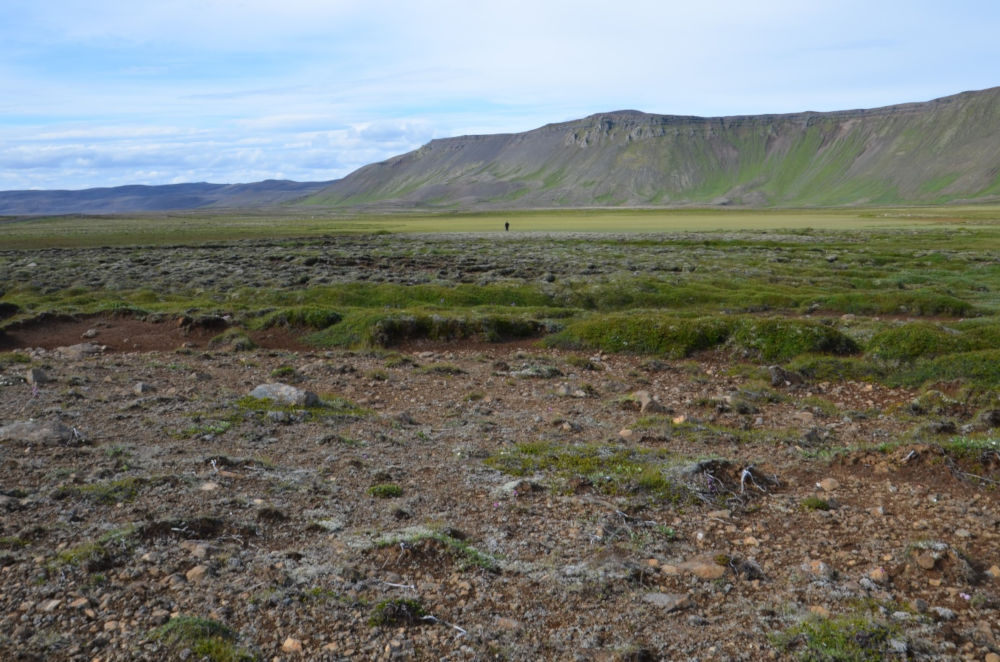Polar and subpolar areas are experiencing very rapid changes in the natural environment, primarily related to increases in air temperature (‘Arctic amplification’). Increasing air temperature, among other things, affects the occurrence of droughts in the Arctic. The dry ground, covered with sparse tundra vegetation, is very vulnerable to wind action. Since the 1990s, there has been an increase in the occurrence of dust storms in Iceland, and about 25 % of the island’s surface is affected by severe and very severe erosion. Instrumental measurements of soil erosion rates are carried out at only a few test sites and observation sequences do not exceed several years. The aim of the research in Iceland was to develop a novel technique for dendrogemorphological analysis to determine erosion rates with annual resolution and their variability over time. For the first time, exposed roots of Arctic dwarf shrubs have been used as a source of environmental information in polar research. The new research method makes it possible to detect erosion processes relatively quickly and will make it possible to predict their negative effects. The international research team, which included Magdalena Opała-Owczarek, PhD, was attended by researchers from the University of Wrocław, the Agricultural University of Iceland, and Michigan State University. The article was published in open access in the journal Geoderma (IF = 7.422, MNiS = 200 pts):
Owczarek P., Dagsson-Waldhauserova P., Opała-Owczarek M., Migała K., Arnalds Ó., Schaetzl R.J., 2022: Anatomical changes in dwarf shrub roots provide insight into aeolian erosion rates in northeastern Iceland. Geoderma 428, 116173.
https://doi.org/10.1016/j.geoderma.2022.116173
The research was conducted within the project ‘Growth-ring record of modern extreme weather phenomena in the Low Arctic (REACT)’ funded by INTERACT grant agreement no. 730938, European Commission HORIZON 2020. This project also resulted in a publication on the development of the first dendrochronological scales of Icelandic dwarf shrubs:
Phulara M., Opała-Owczarek M., Owczarek P., 2022: Climatic signals on growth ring variation in Salix herbacea: comparing two contrasting sites in Iceland. Atmosphere, 13, 718. https://doi.org/10.3390/atmos13050718







